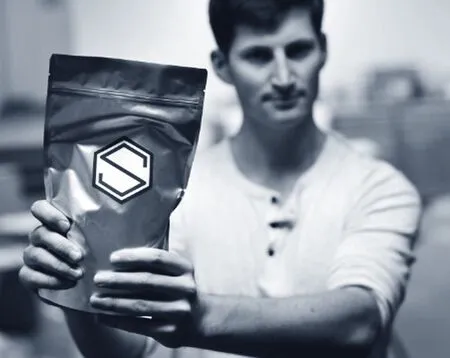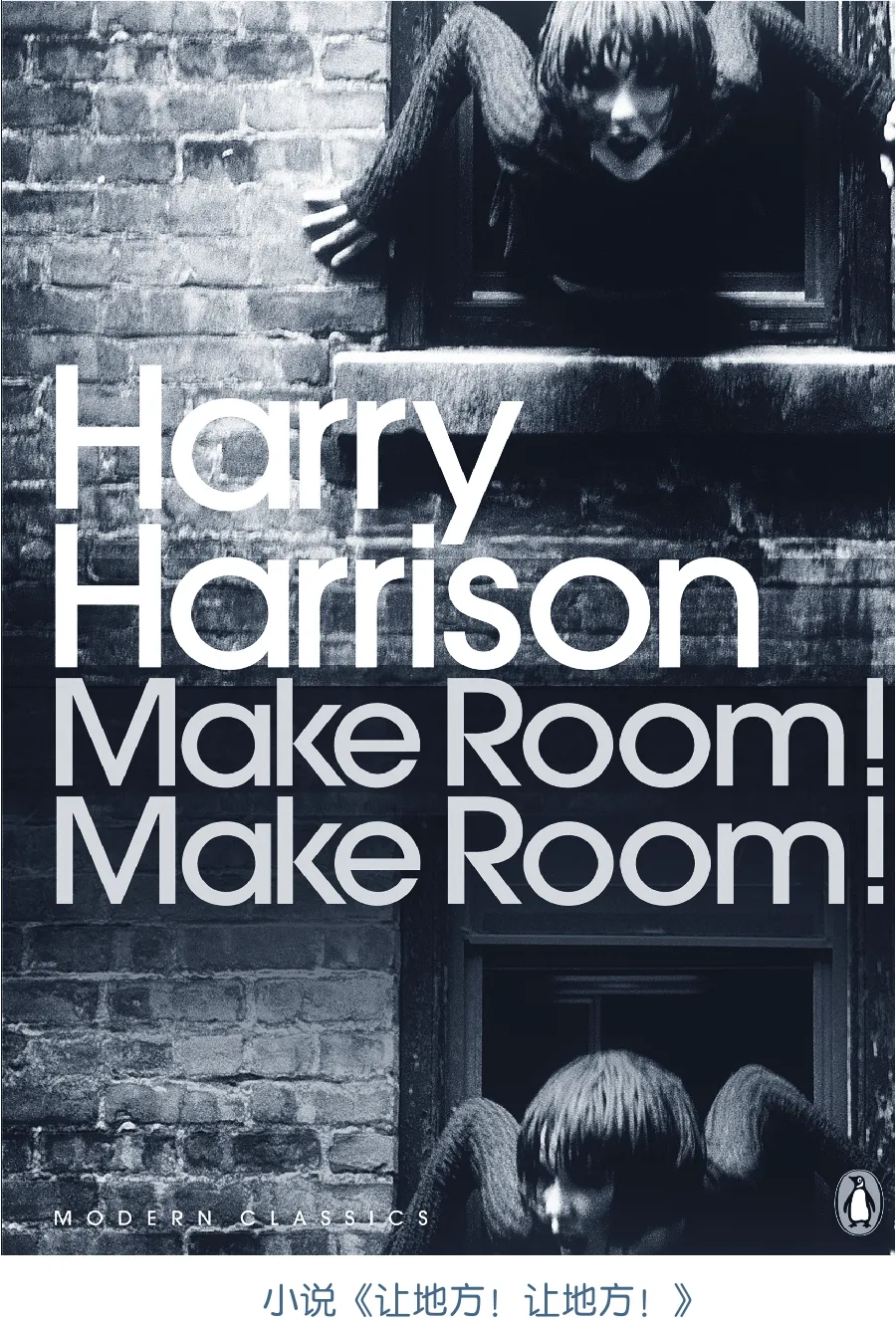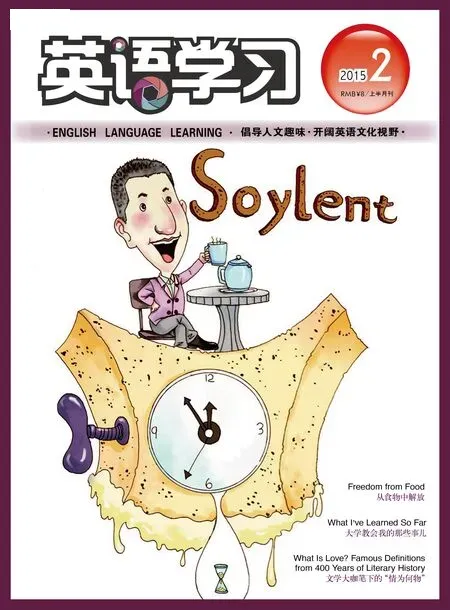Freedom from Food
By Nicola Twilley

It takes time to plan a meal, to say nothing of cooking and eating it. What if we could opt out of1. opt out of: 决定不参加(某事)。food altogether?
There are plenty of superpowers that would make a nice addition to my current lifestyle. I would be delighted to wake up one morning with the ability to fly, to become invisible, or even to turn matter into gold, provided my Midas2. Midas: 迈达斯,希腊传说中的弗里吉亚国王,能点物成金。touch came with a reliable on-off switch. But the superpower that I really want—the one I actually daydream about, wasting time that I don’t have—is the ability to create an extra day or two for myself each week. As the clock strikes midnight between Monday and Tuesday,a private portal3. portal: 大门。would open up: an extra day, just for me. While everyone else sleeps,I write, read, send emails, and maybe even clean the oven, before going to bed and waking up on Tuesday, rested and refreshed just like everyone else, but with everything done.
The odds are reasonable that you might share this fantasy, in the abstract if not in the details. Each year, Gallup4. Gallup: 盖洛普公司,全球知名的民意测验和咨询公司。asks people in the US whether they feel pressed for time,and, each year for the past two decades, half of the population says that they generally do not have enough time to do what they want. The results—stress, sleep deprivation,and even obesity—are equally well-documented.5. 有足够的证据证明,这会导致焦虑、缺觉甚至是肥胖的后果。sleep deprivation: 睡眠不足;well-documented:证据充分的。What if all of those people could have an extra 90 minutes every day, to use as we see fit? Rob Rhinehart, a 25-yearold engineer and entrepreneur based in Studio City, California, believes that his new product, Soylent, can offer exactly that.
“According to the US Bureau of Labor Statistics6. US Bureau of Labor Statistics: 美国劳工统计局。, people spend about 90 minutes a day on food,” Rhinehart explained. That figure is an average that includes grocery shopping, food preparation, consumption, and doing the dishes. By opting out of food,and replacing it with Soylent—named after the soy lentil burgers in the sci- finovelMake Room! Make Room!(1966) by Harry Harrison, rather than its much better-known film adaptationSoylent Green(1973) which came up with the cannibalistic plotline—Rhinehart told me that he’s saved “easily an hour a day, plus”.7. 莱恩哈特告诉我,他每天不吃饭,就只吃Soylent,这个方法能让他每天很轻松地省出一个小时。Soylent这个名称来自哈里·哈里森写于1966年的科幻小说《让地方!让地方!》中出现的大豆扁豆汉堡,而不是源于1973年那部以食人为主要情节的著名改编电影《超世纪谍杀案》。cannibalistic: 同类相食的,食人肉的。
The response was overwhelming. By the time Soylent 1.0 started shipping in May 2014, the company had already accumulated a backlog of more than 20,000 pre-orders,adding up to more than $2 million dollars in sales and—at a conservative estimate—a collective saving of 2,875 years.8. backlog: 存货;conservative estimate: 保守估计。
What, one wonders, are people doing with all this extra time? Will we see a new Renaissance: a Soylent-fuelled flowering of novels, art or, at the very least, apps?9. Renaissance: 文艺复兴;flowering: 繁荣,兴旺。It is perhaps too early to tell, but early signs are mixed. Rhinehart has ploughed his 90 minutes a day into launching his company, and says he still has “a long reading list, a long online course list, a lot of personal projects I’d like to do”.10. plough into: 投入;launch: 开办,开始从事……。He is not against using the time for relaxation, of course, and tells me that he’s heard from other early adopters that they spend an extra hour and a half watching TV, hanging out with friends and family, or just catching up on our pervasive national sleep de ficit.11. pervasive: 普遍的;sleep de ficit: 睡眠不足。
“Just giving people a little more time in general is something the United States really needs,” he told me. “However you use that time is up to you.”

有时人们一忙起来就会感叹:“要是一天有25个小时就好了!”每天多出一两个小时,似乎意味着早上可以多睡一会儿、周末多看一部电影、平时多去打一次球、比别人先写完作业……这样的好事让人想想都有点小激动呢!如今的一项发明让这些事不再遥不可及,你只需喝上一瓶Soylent,每天就能省出这些时间去做自己想做的事!虽然听上去妙不可言,但要留意,它的代价就是……

My own experience bodes12. bode: 保持,持续。less well. I lived on Soylent for five days (Rhinehart sent me a week’s supply, but I cracked early)and I was indeed painfully aware of vast open periods that I would have typically spent planning, shopping for, making, enjoying and cleaning up after meals. Much to my editor’s disappointment, I spent all that extra time joylessly clicking around on the Internet,my brain resisting every effort to corral13. corral: 把……关进。it into more productive activities as if it knew it was being cheated of an expected break. (My editor kindly pointed out that this might be more of a re flection of my own personal failings than a shortcoming inherent to Soylent.)
Of course, this is not the first time Americans have been promised relief from the time-suck of food preparation. Today’s Soylent craze has its roots in the post-Second World War embrace of convenience foods. And, then as now, the range of possible uses for that saved time ranged from the trivial to the substantial—but with a much more gendered twist.14. trivial: 微不足道的,琐碎的;substantial: 重要的。
As Harvey Levenstein writes inParadox of Plenty(1962), the president of the US Grocery Manufacturers Association proudly claimed that convenience foods had reduced the time the average housewife spent on food preparation from 5.5 to 1.5 hours a day over the course of the preceding decade.15. paradox: 悖论;US Grocery Manufacturers Association:美国食品杂货制造商协会;preceding: 之前的。A few years later, in 1969, the chairman of the board of the US Corn Products Company explained to theFinancial Timesthat “we—that is, the food industry—have given her [the housewife] the gift of time, which she may reinvest in bridge, canasta, garden club, and other perhaps more soul-satisfying pursuits”.16. Financial Times: 英国《金融时报》;bridge: 桥牌;canasta: 凯纳斯特纸牌游戏。
Canasta and garden club aside, the real use of all the time saved by convenience foods can be found in female workforce participation rates.Levenstein points out that “by 1960, there were twice as many working wives in America as there had been in 1950, and the number of working mothers had increased by 400 per cent”. The food historian Rachel Laudan, in her provocative essay “In Praise of Fast Food” (2010), notes that modern, processed convenience foods are reviled by today’s cultural elite—and yet they represent an incredible liberation for the women upon whom the labour of food preparation would otherwise traditionally fall.17. 食物历史学家瑞秋·劳丹在她备受争议的《快餐赞》一文中指出,虽然现代化的、经过加工的快餐遭到当今文化精英们的斥责,但它们意味着女性的极大解放,降低了女性在通常情况下准备食物所付出的劳动力。provocative:引起争论的;revile: 斥责。
Laudan said, “Because if they want to have time, if they want to work, if they want to send their kids to school, then taste is less important than having that bit of extra money, and moving into the middle class.”
There is always a trade-off, in other words, involved in replacing homemade with convenience food—and, undoubtedly, in replacing food altogether in favour of a gritty beige liquid.18. trade-off: 交换,交易;gritty: 像砂的;beige: 米黄色。Yet Laudan is clear: simply having the choice of whether to spend time on food, or not, is a valuable and empowering thing.
Why, then, is eating convenience food viewed as a timesaving strategy?According to the researchers, the answer has to do with a reduction of mental effort.“Perhaps the most important and clear-cut19. clear-cut: 明显的。effect of packaged foods is that they reduce the complexity of meal planning,” they write. “The family chef can invest less time thinking about the week’s meals.”
In other words, in a world where nearly 100,000 new food and drink products are added to supermarket shelves each year, convenience food offers a valuable freedom from decision-making—a signposted shortcut through the bewildering cornucopia and competing claims of the contemporary food environment.20. signposted: 设有路标的;bewildering: 令人迷惑的;cornucopia: 丰富;competing: 相矛盾的;claim: 主张。
As it says on the packet, Soylent guarantees “maximum nutrition with minimum effort”. Beyond its impact on human well-being, however, food is equally deeply entwined with21. entwine with: 紧密结合。ecological health. While Rhinehart daydreams about a future in which Soylent is synthesised by algae in energy-neutral bioreactors, for now, its raw ingredients are purchased from a variety of sources across the US and China.22. synthesise: 合成;algae: 藻类;energy-neutral: 能量平衡的;bioreactor: 生物反应器;raw ingredient: 原材料。
Soylent’s ingredients seem simple and pure: the distilled23. distilled: 用蒸馏提取的。essence of nutrition.In reality, however, its supply chains and ecological impact are as complex as—and even more mysterious than—the food it replaces.
Soylent’s trade-offs, at least in terms of human and ecological health, are, it seems, quite signi ficant. However, after five days spent living on 100 per cent Soylent, I can report that its most pressing problem is how downright unpleasant it tastes: like oversweet vanilla body wash, but with the texture of silt.24. downright: 彻头彻尾的;vanilla: 香草;body wash: 沐浴露;texture:质地;silt: 泥沙 。I lost weight,but only because I found it was more tempting to go to bed hungry than to drink more Soylent.
Perhaps Soylent’s real value, then, is that by offering a functional simulation25. simulation: 模拟,仿造。of food it enables us to appreciate those qualities in the original that are most important to us. In the same way that a study of AstroTurf reveals the attributes we most value in turfgrass, Soylent is a Rorschach test for our individual and societal relationship with food.26. 就像在对人造草皮的研究中,我们发现了草坪用草最有价值的特质一样,Soylent也只是对个人、社会与食物的关系进行的一项测试。AstroTurf:人造草皮;turfgrass: 草坪用草; Rorschach: 罗夏墨迹测验,通过分析测试者观看墨迹图像产生的联想,进而判断出其人格的测验。
I still have three pouches27. pouch: 袋。sitting in my kitchen cabinet, if anyone wants some…

